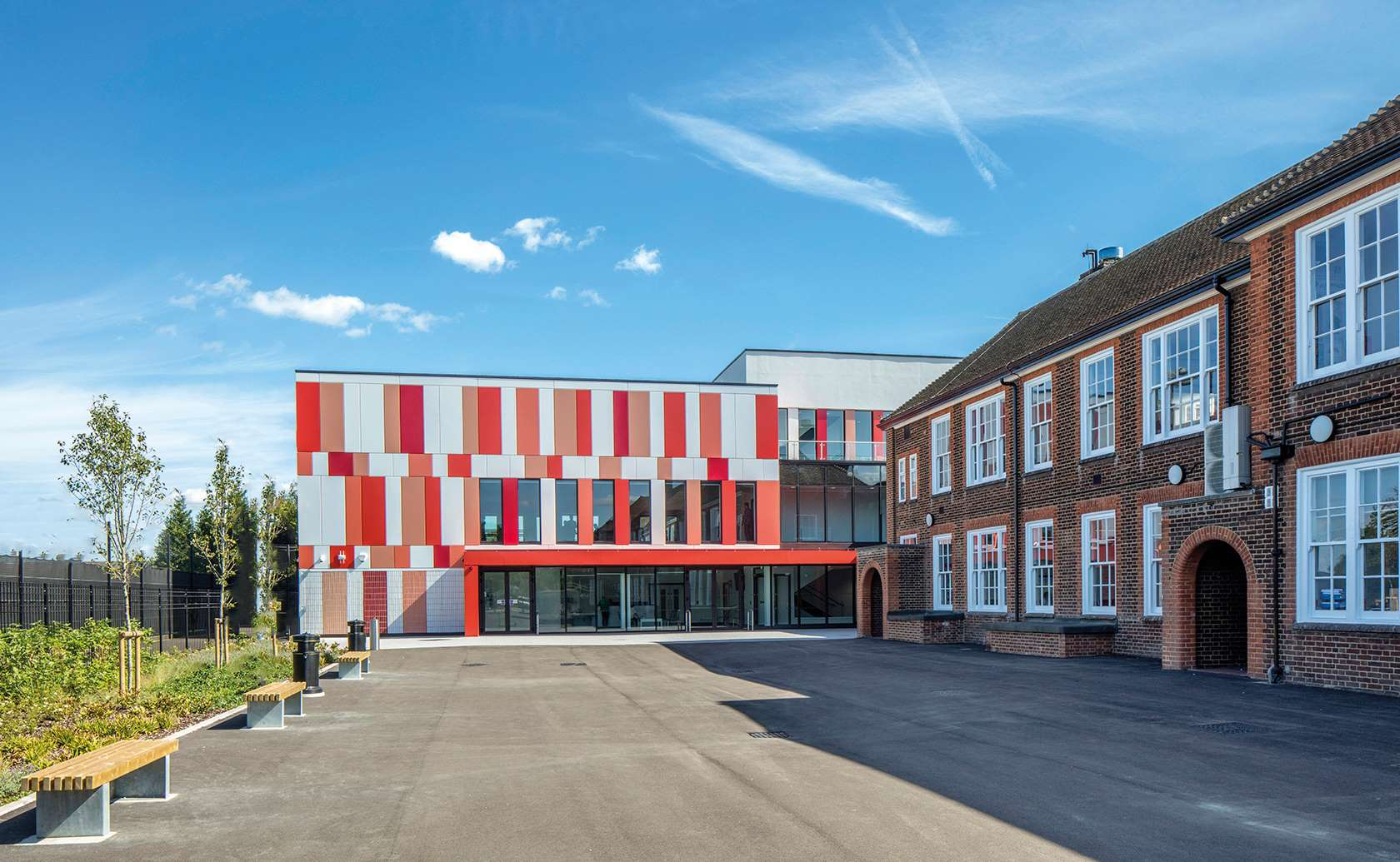
Modular building holds the key to future-proofing schools,says Richard Hyams, Founder and Director of astudio
WHILE schools have now reopened in the wake of the national lockdown, the way the buildings now operate has under gone dramatic change. The effects of the pandemic, from the necessity of social distancing to the increased popularity of remote learning, have forced schools to adapt. Future-proofing schools will require more than a financial impetus. In August, the government fast-tracked a promising £560m investment to improve facilities at hundreds of schools, but this money must be spent wisely in order to yield a return on the investment. Several opportunities for schools can be explored. Schools have had to adapt quickly to accommodate students’ return for the new academic year, and the prospect of having to live with Covid-19 in the long term could mean that further rapid response is required. This can be delivered by innovative means. Modular construction, for example, enables schools to expand capacity with efficiency. Modular construction allows project activities to be streamlined, with any supply chain issues more easily resolved from the factory floor. The result is a potential 50% reduction in programme length, and a saving of more than 75% in building time. More over, the minimal time spent onsite, where the prefabricated structures can be assembled relatively quickly, minimises disruption to existing facilities – with fewer distractions for students and teacher by construction noise.
Another advantage of modular construction is its conduciveness to reducing schools’ carbon footprints, as the UK’s 2050 deadline for net-zero carbon emissions looms. Construction can contribute by using new technologies to addresses energy wastage and its resulting costs. The construction sector is the UK’s largest consumer of natural resources, using more than 400m tonnes of material each year. Factory construction can help offset this environmental impact by producing up to 90% less waste than traditional processes. This is largely achieved by recycling waste materials into other projects, or using more eco friendly materials from the outset. Modular construction is not the only innovation how schools can achieve their sustainability goals. New opportunities for building exteriors can have a large impact. For instance, at a studio we are working with the likes of Brunel University to develop facades that can be skinned with algae compounds to create ‘livingwalls’ which remove CO2 from the air and provide a sustainable source of biofuel. Inaddition, footfall pathways can monitor the occupation of classrooms and corridors, regulating heating and lighting provision accordingly to minimise waste.
Footfall pathway mapping, along with ventilation systems, can also form part of a new technological infrastructure designed to keep staff and students safe in the wake of the pandemic and beyond. By tracking the density of learning spaces and enabling contactless systems, for example, tech equipped capabilities can help mitigate the risk of Covid-19 infection, while generally maintaining an optimal space for occupants’ health and comfort in the long term. Beyond the immediate term, schools must now also provide an environment where students can thrive outside of the classroom. Once again, technology offers a solution to sustain the highest quality learning environment. With many students routinely working from home, schools must equip their buildings with the connectivity solutions to meet the needs of remote learners. Technology can keep classes and cohorts together,even when physically disparate.
Any building should be designed with its users in mind, and this is particularlyimportant for schools. Common to all these technological developments is their capacity to improve the educational experience for all involved. For tangible evidence of the positive impact that good architecture can have on students, we need look no further than St Paul’s Way Trust School in Tower Hamlets. This school’s new building, designed by astudio, helped it move from special measures to Ofsted outstanding grading within two years of its completion, with Ofsted’s report citing the positive effect of the new build on both learning and behaviour. Schools and families are conscious ofthe benefits that more user-focused design can bring. The success of StPaul’s Way encouraged them to bring in astudio to redevelop Royal Greenwich Trust School, advancing the same ethos of good design informing education.
Moreover, prospective students and parents can be inspired and give feedback on projects before construction even begins, as was the case at another astudio project, Kingston Academy, where VR headsets were used to explore the future learning space. The future of school architecture has, in many ways, already arrived. Schools have had to adapt to very difficult circumstances, and it is vital that they remain well-equipped to evolve with the times. A school is its staff and students, not its buildings, but schools must ensure that their buildings provide a firm foundation for staff and students to perform to their utmost ability. projects through to fruition.” www.astudio.co.uk